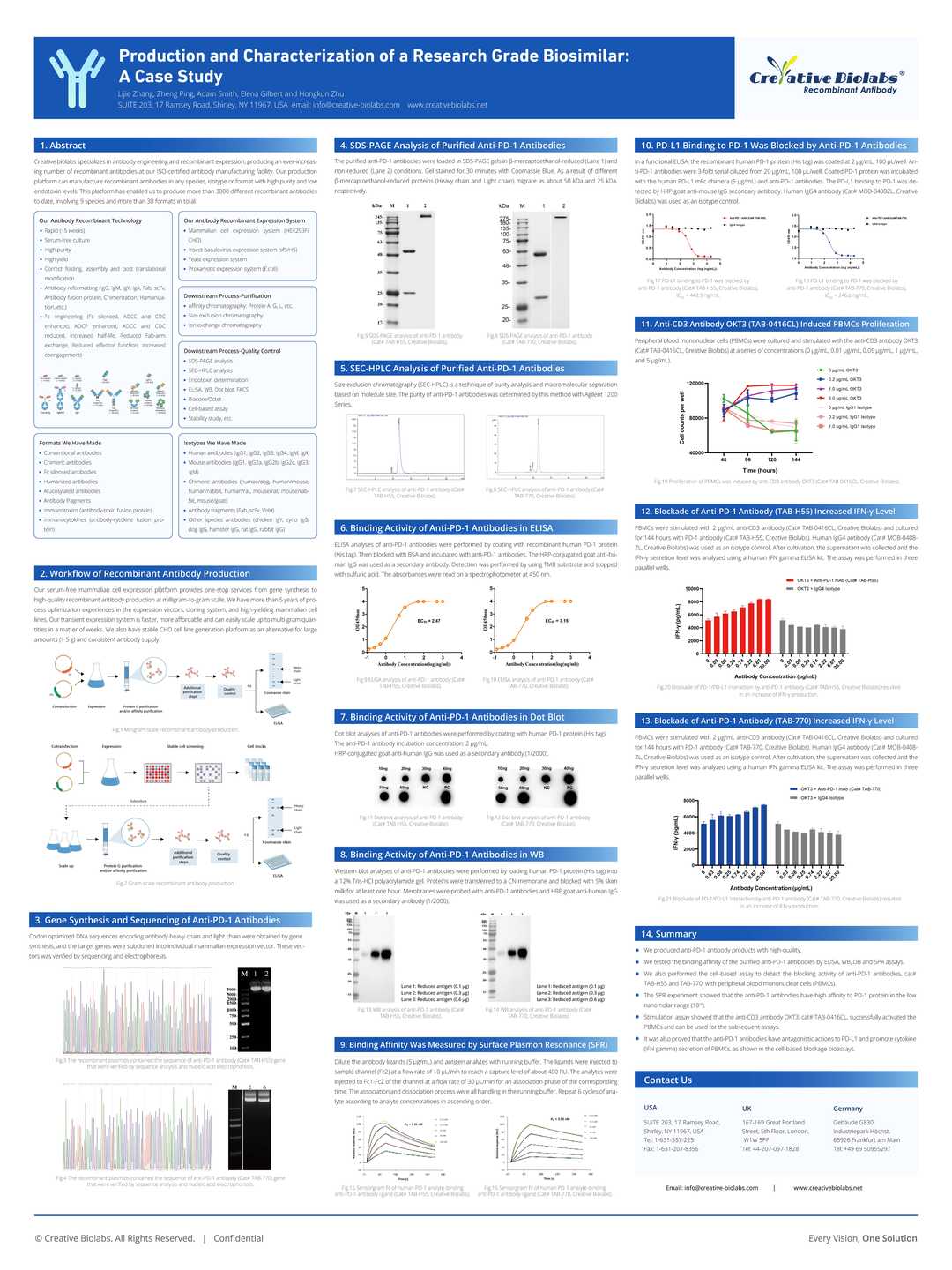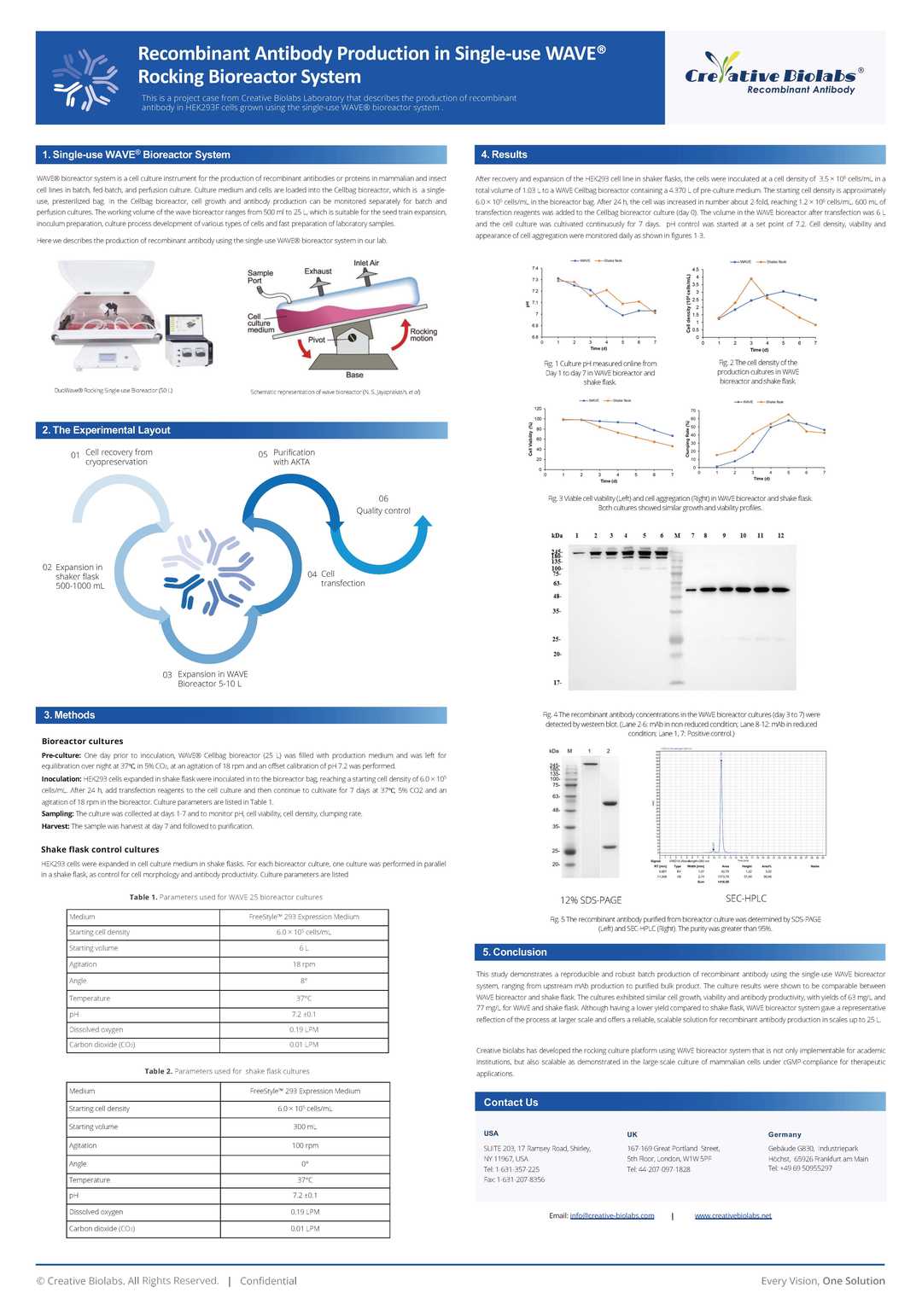Mouse Anti-UPAR Recombinant Antibody (clone ATN615)
CAT#: PABC-130
Recombinant Mouse Antibody (ATN615) is capable of binding to UPAR, expressed in Chinese Hamster Ovary cells (CHO). This antibody binds to uPAR in vitro with high affinity (K(d) approximately 1 nM) and does not interfere with uPA binding to uPAR.


Specifications
- Immunogen
- Human plasminogen activator, urokinase receptor
- Host Species
- Mouse
- Type
- Mouse IgG
- Specificity
- Human UPAR
- Species Reactivity
- Human
- Clone
- ATN615
- Applications
- ELISA, IP, WB, IHC, IF, FuncS
Product Property
- Purity
- >95% as determined by SDS-PAGE and HPLC analysis
- Concentration
- Please refer to the vial label for the specific concentration.
- Storage
- Centrifuge briefly prior to opening vial. Store at +4°C short term (1-2 weeks). Aliquot and store at -20°C long term. Avoid repeated freeze/thaw cycles.
Applications
- Application Notes
- The antibody ATN615 has been reported in applications of Enzyme-linked Immunosorbent Assay, Immunoprecipitation, Western Blot, Immunohistochemistry, Immunofluorescence, Functional Assay. It's recommended that the optimal antibody concentration, dilution, incubition time etc. be carefully titrated in specific assays.
Target
Customer Review
There are currently no Customer reviews or questions for PABC-130. Click the button above to contact us or submit your feedback about this product.
 Emily Walker
Emily Walker John Martinez
John Martinez Sarah Thompson
Sarah ThompsonQ&As
-
Is the anti-UPAR recombinant antibody clone ATN615 suitable for use in Western blotting?
A: Yes, the anti-UPAR recombinant antibody clone ATN615 (PABC-130) is suitable for use in Western blotting. It provides specific binding to UPAR, allowing for reliable detection in Western blot assays.
-
What are the storage recommendations for the anti-UPAR recombinant antibody clone ATN615?
A: The recommended storage condition for the anti-UPAR recombinant antibody clone ATN615 (PABC-130) is at -20°C or lower. For short-term storage, it can be kept at 2-8°C. To ensure stability, avoid repeated freeze-thaw cycles.
-
Can the anti-UPAR recombinant antibody clone ATN615 be used in immunoprecipitation assays?
A: Yes, the anti-UPAR recombinant antibody clone ATN615 (PABC-130) can be used in immunoprecipitation assays. It provides specific binding to UPAR, enabling the successful precipitation of the target protein from complex mixtures.
-
Is the anti-UPAR recombinant antibody clone ATN615 effective in ELISA applications?
A: Yes, the anti-UPAR recombinant antibody clone ATN615 (PABC-130) is effective in ELISA applications. It has been validated for use in such assays and provides reliable detection of UPAR.
-
What is the optimal dilution for using the anti-UPAR recombinant antibody clone ATN615 in immunofluorescence?
A: The optimal dilution for using the anti-UPAR recombinant antibody clone ATN615 (PABC-130) in immunofluorescence is typically 1:100 to 1:500. It is advisable to perform a dilution series to determine the best working concentration for your specific experimental conditions.
View the frequently asked questions answered by Creative Biolabs Support.
Citations
-
Zhu, Ke, et al. "The D2D3 form of uPAR acts as an immunotoxin and may cause diabetes and kidney disease." Science Translational Medicine 15.714 (2023): eabq6492. https://doi.org/10.1126/scitranslmed.abq6492This study investigates the role of the D2D3 form of the soluble urokinase plasminogen activator receptor (suPAR) in the development of diabetes and kidney disease. The research found that D2D3 acts as an immunotoxin, leading to kidney disease and insulin-dependent diabetes mellitus in transgenic mice fed a high-fat diet. These mice exhibited symptoms such as microalbuminuria, elevated serum creatinine, glomerular hypertrophy, decreased insulin and C-peptide levels, impaired glucose-stimulated insulin secretion, and reduced pancreatic β cell mass. The study demonstrated that targeting D2D3 could potentially serve as a therapeutic approach for treating kidney diseases and insulin-dependent diabetes mellitus.
Creative Biolabs played a crucial role in this study by providing the anti-uPAR monoclonal antibodies used for immunoprecipitation and Western blot analyses. Specifically, the anti-uPAR antibody ATN615 (Cat#: PABC-130) from Creative Biolabs was utilized to detect the presence of D2D3 in human sera and mouse samples. These products were instrumental in identifying the pathogenic role of D2D3 and validating the effectiveness of anti-uPAR antibody treatment in restoring β cell mass and function in D2D3 transgenic mice. The contributions of Creative Biolabs' reagents were vital in enabling the detailed examination of D2D3's impact on kidney and pancreatic functions.
Cite This Product
To accurately reference this product in your publication, please use the following citation information:
(Creative Biolabs Cat# PABC-130, RRID: AB_3111577)
Submit Your Publication
Published with our product? Submit your paper and receive a 10% discount on your next order! Share your research to earn exclusive rewards.
Downloadable Resources
Download resources about recombinant antibody development and antibody engineering to boost your research.
Product Notes
This is a product of Creative Biolabs' Hi-Affi™ recombinant antibody portfolio, which has several benefits including:
• Increased sensitivity
• Confirmed specificity
• High repeatability
• Excellent batch-to-batch consistency
• Sustainable supply
• Animal-free production
See more details about Hi-Affi™ recombinant antibody benefits.
Datasheet
MSDS
COA
Certificate of Analysis LookupTo download a Certificate of Analysis, please enter a lot number in the search box below. Note: Certificate of Analysis not available for kit components.
Protocol & Troubleshooting
We have outlined the assay protocols, covering reagents, solutions, procedures, and troubleshooting tips for common issues in order to better assist clients in conducting experiments with our products. View the full list of Protocol & Troubleshooting.
See other products for "Clone ATN615"
- CAT
- Product Name
See other products for "uPAR"
Select a product category from the dropdown menu below to view related products.
| CAT | Product Name | Application | Type |
|---|---|---|---|
| MOB-1024 | Recombinant Anti-uPAR Antibody | WB, IP, FuncS | IgG |
| MHH-1024 | Recombinant Human Anti-uPAR Antibody | ELISA, IP, FuncS | IgG |
| CAT | Product Name | Application | Type |
|---|---|---|---|
| MOB-1024-F(E) | Recombinant Anti-uPAR Antibody Fab Fragment | WB, IF, FuncS | Fab |
| MHH-1024-F(E) | Recombinant Human Anti-uPAR Antibody Fab Fragment | WB, FC, FuncS | Fab |
| PFBC-130 | Mouse Anti-UPAR Recombinant Antibody (clone ATN615); Fab Fragment | WB, IHC, IF, FuncS | Mouse Fab |
| CAT | Product Name | Application | Type |
|---|---|---|---|
| MOB-1024-S(P) | Recombinant Anti-uPAR Antibody scFv Fragment | FC, IP, FuncS | scFv |
| MHH-1024-S(P) | Recombinant Human Anti-uPAR Antibody scFv Fragment | FC, Neut, Funcs | scFv |
| PSBC-130 | Mouse Anti-UPAR Recombinant Antibody (clone ATN615); scFv Fragment | WB, IHC, IF, FuncS | Mouse scFv |
| CAT | Product Name | Application | Type |
|---|---|---|---|
| TAB-0392CL | Anti-Human UPAR Recombinant Antibody (10H6) | IHC, ELISA, Inhib | |
| TAB-0393CL | Anti-Human UPAR Recombinant Antibody (8B12) | SPR, Inhib | |
| TAB-0394CL | Anti-Human UPAR Recombinant Antibody (13D11) | IHC, ELISA, Inhib | |
| TAB-0395CL | Anti-Human UPAR Recombinant Antibody (19.1) | Inhib | |
| TAB-0396CL | Anti-Human UPAR Recombinant Antibody (AL6) | IHC, ELISA, Inhib |
| CAT | Product Name | Application | Type |
|---|---|---|---|
| TAB-0398CL | Anti-Human UPAR Recombinant Antibody (3B6) | IHC, ELISA, Inhib | |
| TAB-0399CL | Anti-Human UPAR Recombinant Antibody (3C10) | IHC, ELISA, Inhib | |
| TAB-0400CL | Anti-Human UPAR Recombinant Antibody (1C1) | IHC, ELISA, Inhib | |
| TAB-0401CL | Anti-Human UPAR Recombinant Antibody (2B10) | IHC, ELISA, Inhib | |
| TAB-0402CL | Anti-Human UPAR Recombinant Antibody (2A3) | IHC, ELISA, Inhib |
Popular Products

Application: WB, ELISA, IP, FC, FuncS, Neut, IF

Application: Neut, ELISA, IF, IP, FuncS, FC, ICC

Application: ELISA, FC, IP, FuncS, IF, Neut, ICC

Application: WB, FC, IP, ELISA, Neut, FuncS, IF

Application: ELISA, FC, IP, FuncS, IF, Neut, ICC

Application: FC, IP, ELISA, Neut, FuncS, IF, ICC
-CB2006C17L-4.jpg)
Application: WB, ELISA
-4.jpg)
Application: FC, FuncS, IA, IF, IP, IHC
For research use only. Not intended for any clinical use. No products from Creative Biolabs may be resold, modified for resale or used to manufacture commercial products without prior written approval from Creative Biolabs.
This site is protected by reCAPTCHA and the Google Privacy Policy and Terms of Service apply.





















